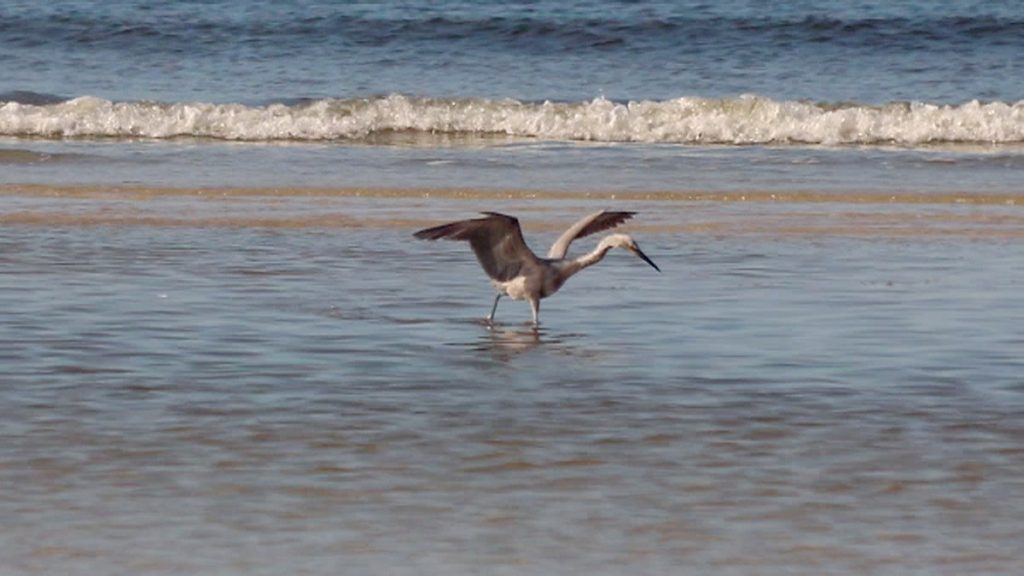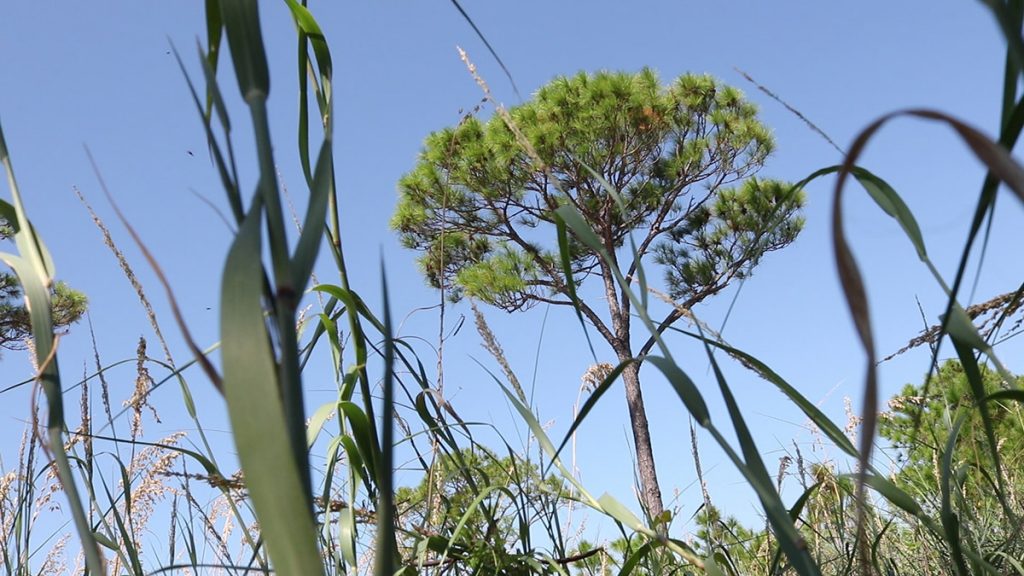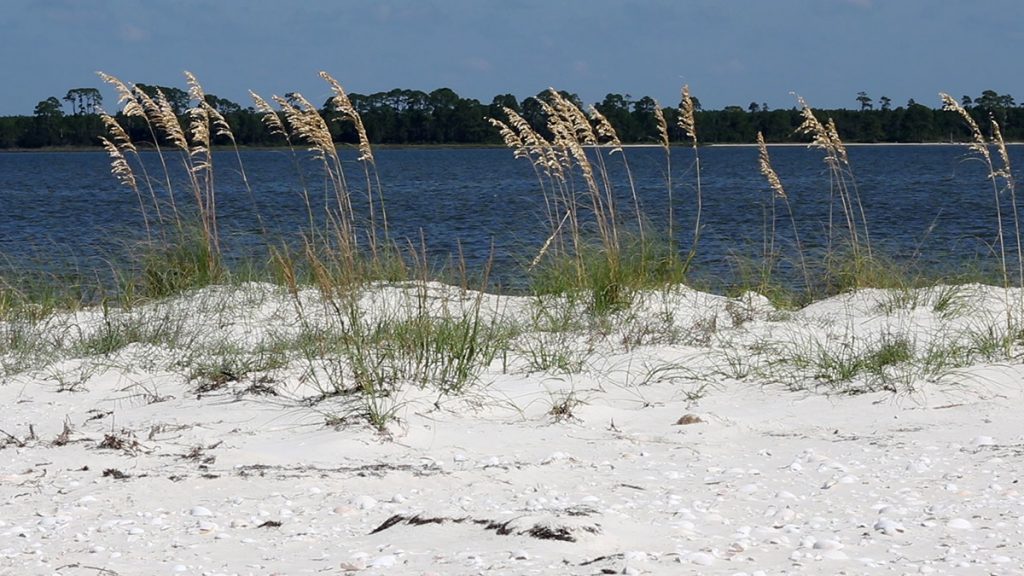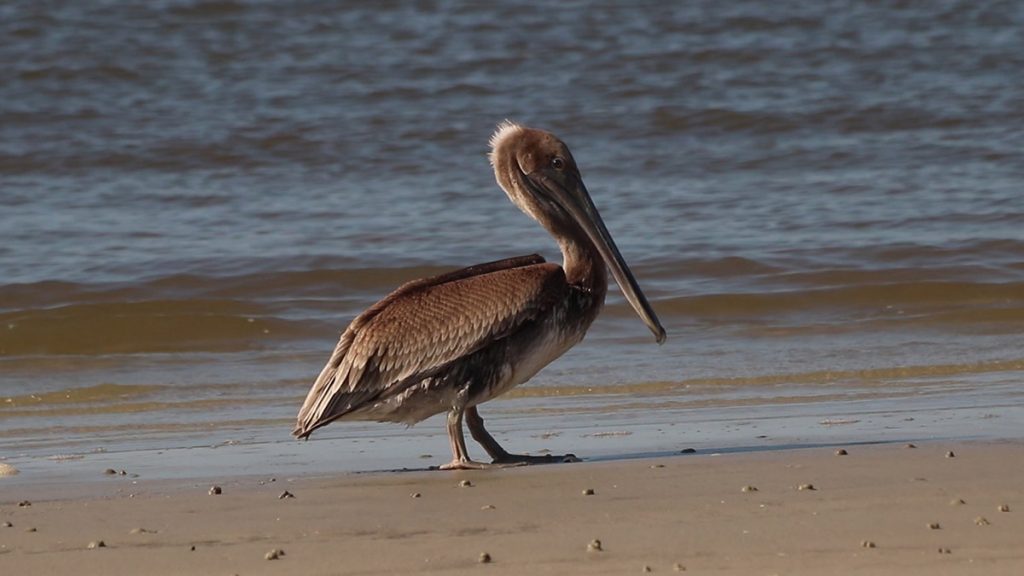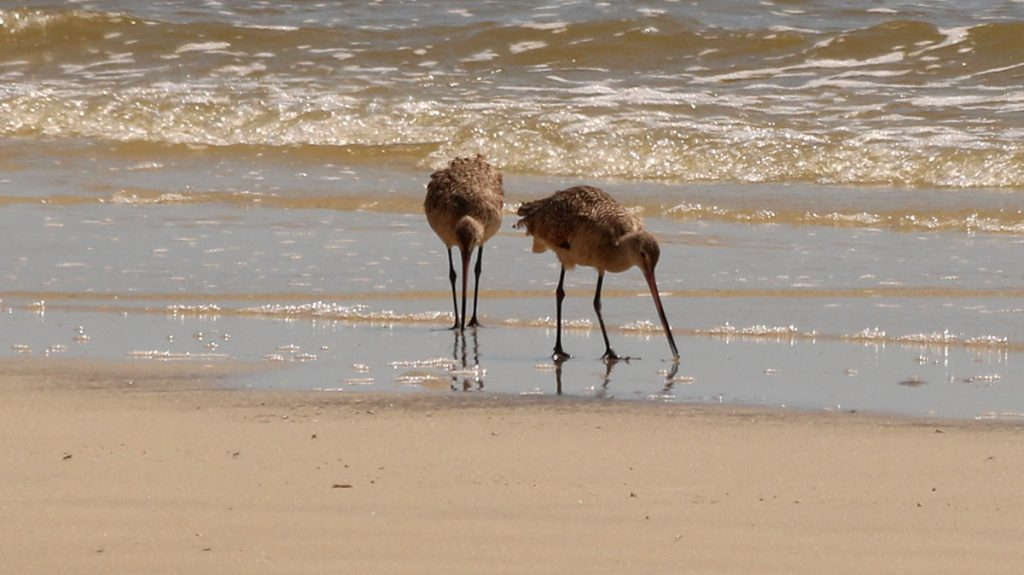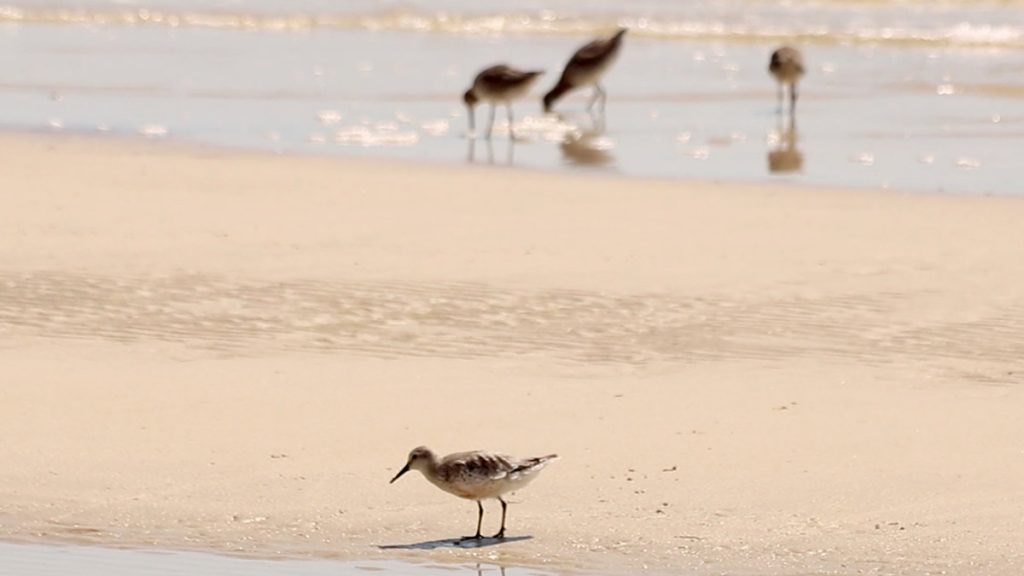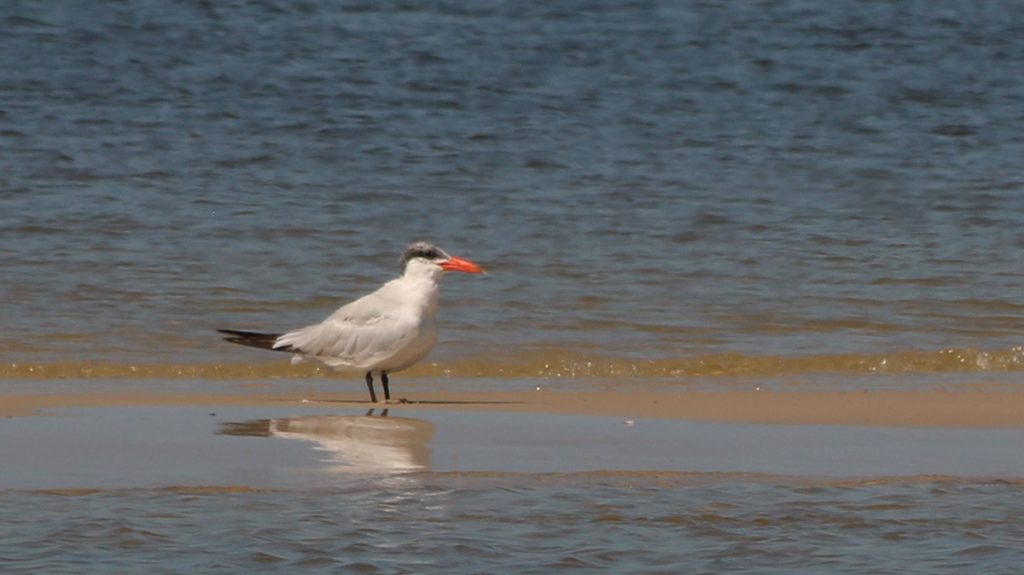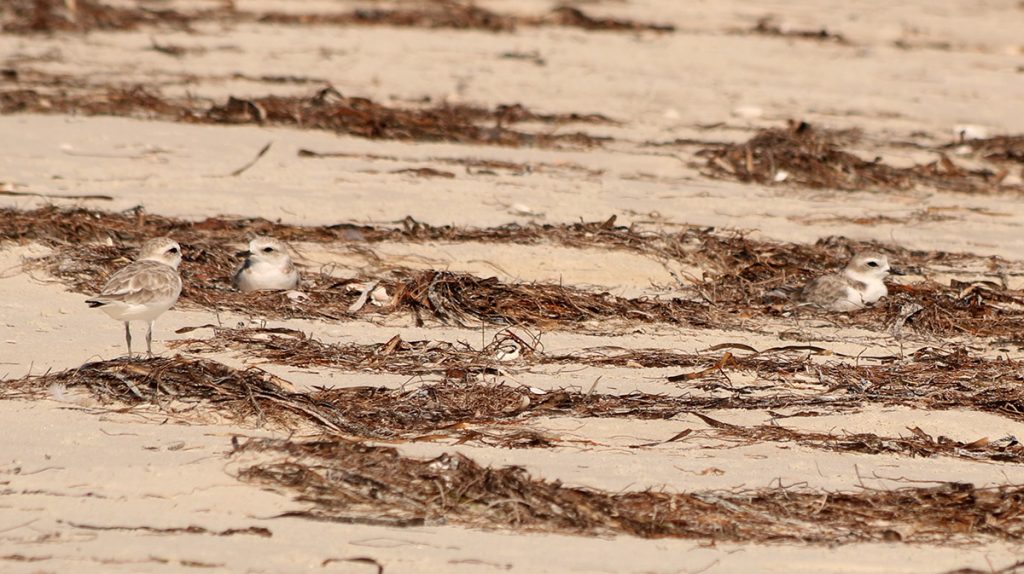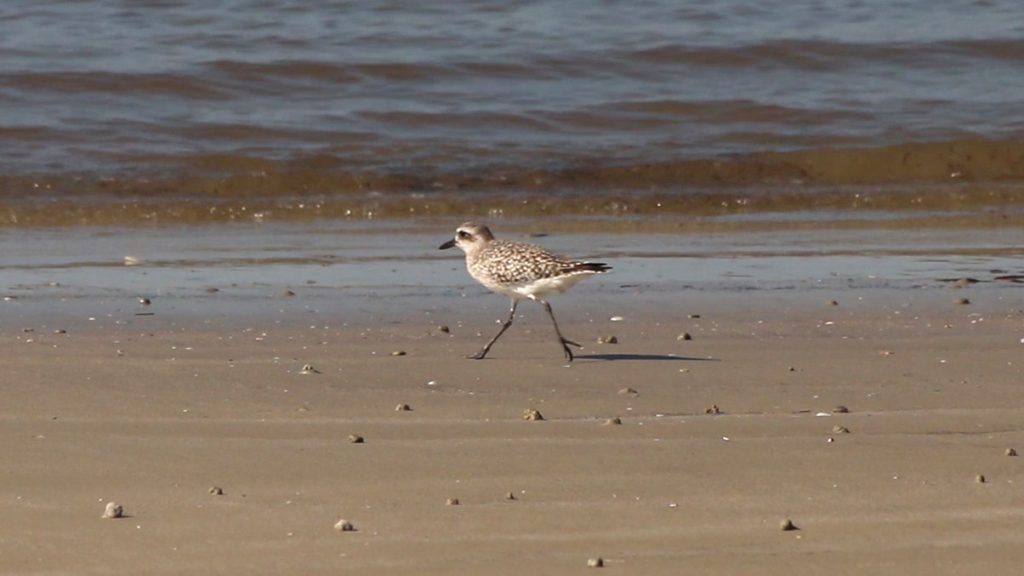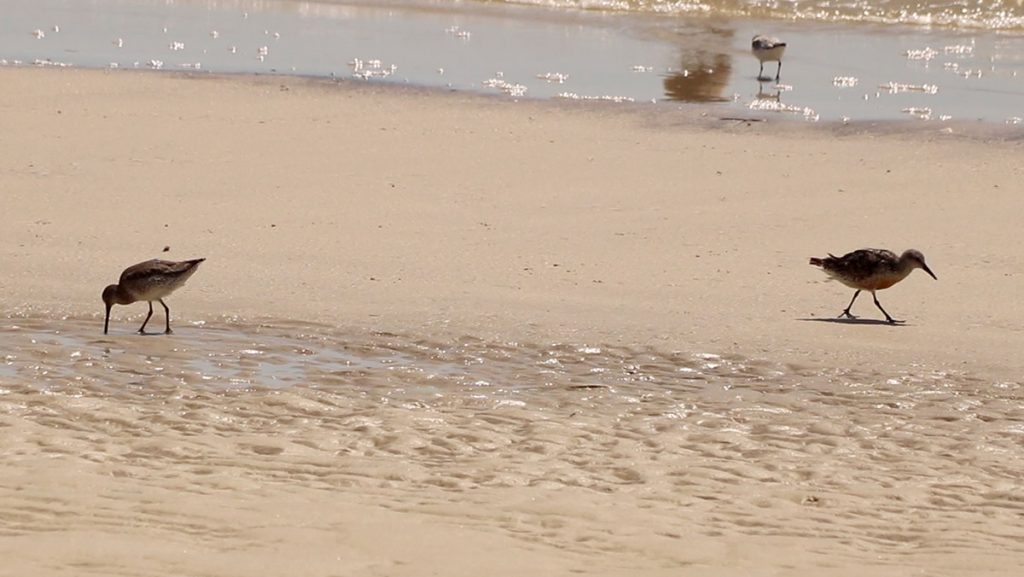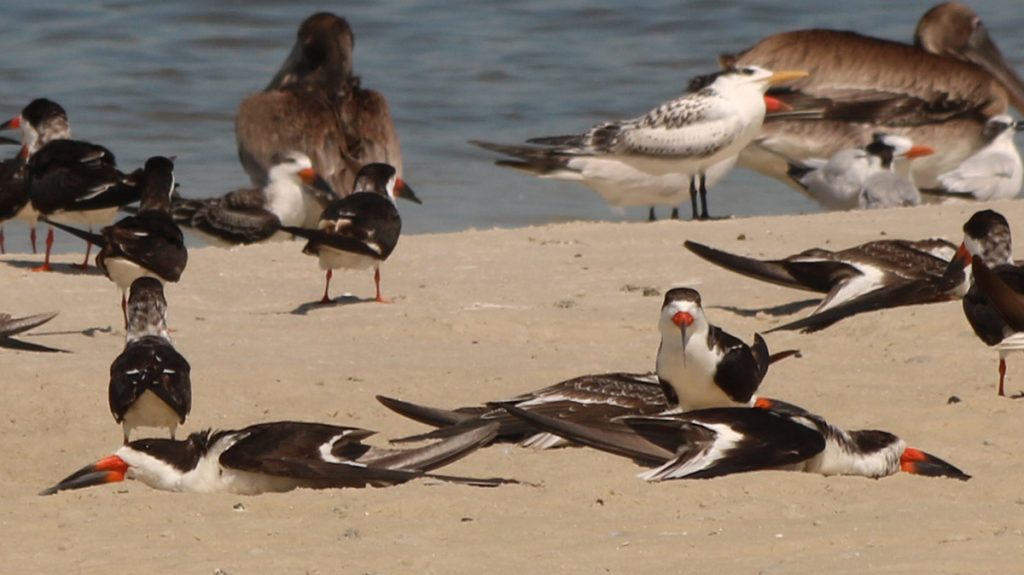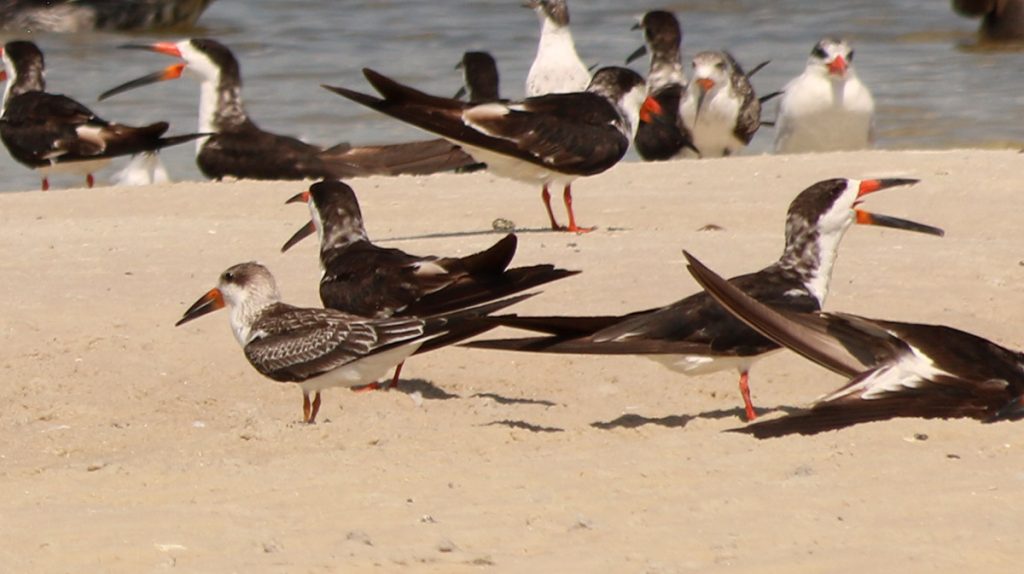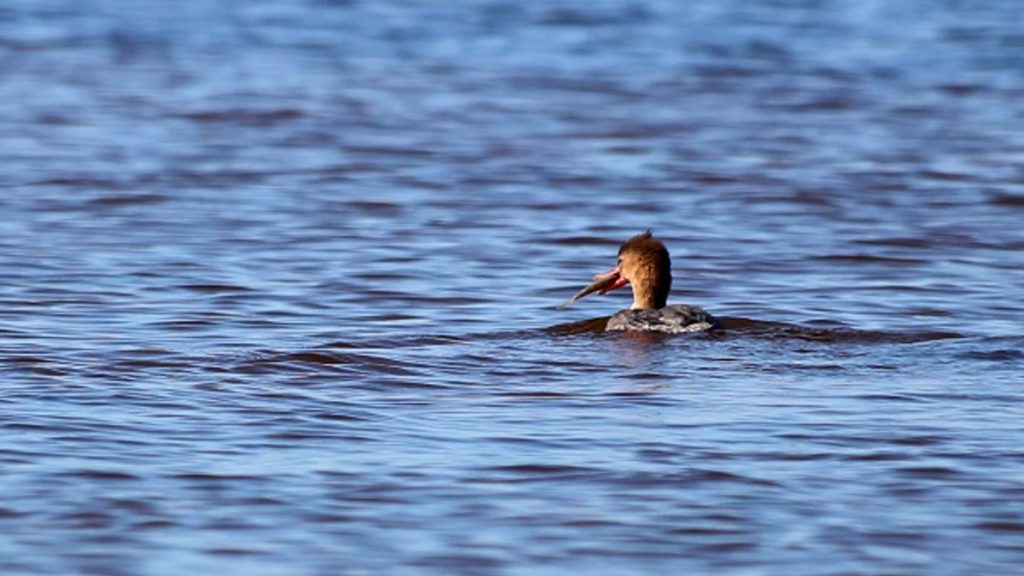At the John S. Phipps Preserve on Alligator Point, we observed a wealth of shorebirds, including many which had recently migrated into the area…
Subscribe to the WFSU Ecology Blog to receive more videos and articles about our local, natural areas, and subscribe to the WFSU Ecology Youtube Channel.
Rob Diaz de Villegas WFSU Public Media
It’s mid-September at the John S. Phipps Preserve on Alligator Point, and I’m walking the beach with Audubon Florida in search of migratory shorebirds. Almost as soon as we start, we find a tall, pale wading bird dancing in the low tide area. Its general shape suggests either a great blue heron or reddish egret, but the color’s not quite right for typical adults of either species. Bonnie Samuelson uses this as an exercise in bird ID. Great blue herons do have a white morph, and reddish egrets are pale as juveniles. At a glance, it could be either. But this dancing behavior gives us the clues we need to identify the bird.
Bonnie is Audubon Florida’s Shorebird Project Manager for Northwest Florida. She is well versed in the many similar looking species that make use of this beach/ dune habitat. “You can see that now as it is dancing around, stirring up the fish on the bottom.” Bonnie says. “That is very indicative of the feeding behavior of a reddish egret.”
This is the first of many winter visitors we’ll see today.
The Phipps Preserve is important for migrants as well as sensitive year-round species. The state threatened snowy plover is joined by the nearly identical piping plover, visiting from the Great Lakes region. We pass recently arrived marbled godwits and red knots on the way to the tip of Alligator Point, where hundreds of black skimmers flop onto wet sand to cool down.
It’s these animals that make this 44 acre preserve stand out among the 1,000,000+ acres of conservation land in north Florida.
Shelter for Shorebirds and Sea Turtles at the John S. Phipps Preserve
“It’s a small preserve, one of our smallest,” says David Printiss, North Florida Program Manager for the Nature Conservancy. “However, it’s exceptionally important for our coastal resources, in particular the shorebirds and the sea turtles.”
It’s David that pointed out to me just how much of our local lands are protected. In fact, just across Ochlockonee Bay from where we are, the Saint Marks National Wildlife Refuge protects over 70,000 acres along the coast.
The Refuge is an important estuary habitat. Wakulla County is lined with marshes and intertidal oyster reefs, mucky places supporting commercially important seafood species. But it’s no place for a snowy plover to make a nest.
“So, if you can imagine the Gulf of Mexico in pre-Columbian times,” David says, “there was lots and lots of beach. The sandy beach we all know and love to recreate on is also the same sliver of habitat that many species need to reproduce. That’s where they actually nest and lay their eggs.”
That’s how it was a couple hundred years ago. Today along the Gulf, it’s a different story, one that we explored in more depth in the first of our snowy plover stories this past summer. The beaches remain, of course. But the adjacent dune and grass habitat has, in a lot of places, been replaced by condos, hotels, and restaurants.
As we explored in the linked story, Florida has more snowy plovers than the next few Gulf states, and north Florida has the bulk of Florida’s population. You can see why on the map below. The Phipps Preserve and Bald Point State Park form the eastern edge of beach habitat dispersed among barrier islands and peninsulas. A lot of this land is protected in state parks.
Having this much protected beach habitat makes this area a haven for shorebirds. Let’s take a closer look at what specifically makes the Phipps Preserve an attractive place to nest or migrate to.
Coastal Grasslands | Good for Birds, and Rattlesnakes, too
I Interviewed David Printiss near the gated entrance to the preserve, in the shade of slash pines. Every time I visit here, we make our way to the beach on vaguely defined pathways through grasses and vines. It’s not as conventionally pretty as the beach, but it’s an important part of the property.
“Right here where we’re standing is a coastal grassland.” David says. “It has a few scattered slash pine, mostly sea oats and a host of other grasses and forbs, which is unique to this very salty, windy, wet area with very poor soils.”
Forb is a word I hear a lot when talking to biologists about the longleaf pine ecosystem. In the upland forest, like here, grasses provide shelter to numerous species. Forbs are succulent plants, a critical food source to birds and small mammals. Those in turn are food for larger predators. David mentions that coastal grasslands have an abundance of eastern diamondback rattlesnakes.
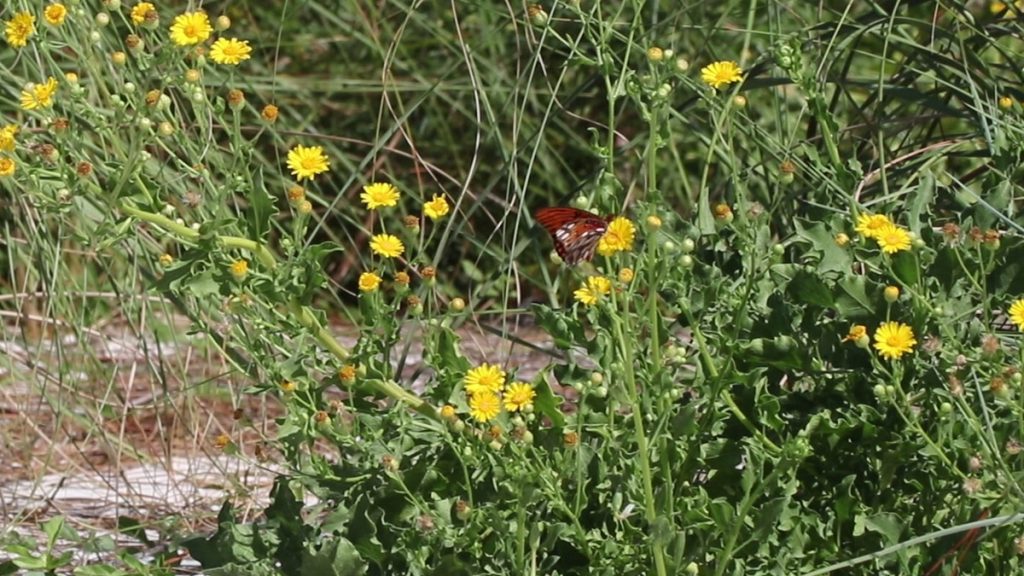
A gulf fritillary nectars on flowers growing among grasses at the Phipps Preserve. In the fall, these flowers fuel monarch butterflies as they make their final stop before migrating to Mexico.
Once we’re out on the coast, sea oats alternate with bare patches in a way that many shorebird species find favorable for nesting. I’ll again refer back to our first snowy plover segment. Those bare patches are littered with shells and scraps of dead grass, which camouflage nests on the ground. The plovers like the open space directly around the nest, as it lets them see approaching predators. And having the tall grass nearby still offers some cover, and a place for chicks to hide once they hatch.
The previous segment covered the nesting season, which is in late spring/ early summer. Walking down the beach now, in mid-September, plovers are hiding in the seagrass wrack. Birding scopes and zoom lenses (and Bonnie’s sharp eyes) reveal them to us from a safe distance.
“They don’t need a whole lot.” David says. “What they need is space.”
That’s why the Phipps Preserve is, for the most part, off limits.
“Due to the critical need for nesting habitat in the warmer months, and overwintering in the colder season, the John S. Phipps Preserve is not open to the public. However, hiking right along the water’s edge is still allowed at this time. We would just like people to remember that it is important to give, during nesting season, a 300-foot buffer. And if you see a group of birds loafing on the beach, give them as much room as possible.”
And, pointing once again to the previous post: if, during nesting season, you see the broken wing display, you’re too close.
Watching Bird Behaviors
The Phipps Preserve is (mostly) off limits to the public, but Audubon Florida routinely monitors shorebirds here. This includes finding and logging banded birds. We’re on our way to meet with Collette Lauzau, who has been surveying birds since the early morning.
As we walk, Bonnie notes that the tide right now is favorable for bird watching. “What seems like a really good time is a falling tide, after a high tide.” The tide brings in small fish, crustaceans, and other tasty morsels which, as the tide falls, find themselves in shallow water, or stranded on mud flats.
The birds we see have different sized legs and beaks. “That allows the birds with the shorter legs to be higher up on the beach,” Bonnie says. “The birds with the longer legs may be more toward the water. And they’re all feeding at different levels along the beach. That allows really large aggregations and concentrations of these birds.”
Let’s take a closer look at all of the species we saw on our hike to Alligator Point, listed in the order we saw them in the video.
Birds We See in the Video
00:02 Black skimmers (Rynchops niger) and a few terns taking off from the beach. Collette had been seeing a peregrine falcon harassing the birds on the point all morning long. I didn’t see it, but did witness as its presence nearby spooked the birds. We’ll see more skimmers later on.
00:05 Brown pelican (Pelicanus occidentalis) waddling along the beach. We don’t often get to witness pelicans walking, but Bonnie believes this one was injured. It does look like it has a bit of a limp. Soon after we see it in this clip, it got in the water and swam off.
00:16 Marbled godwit (Limosa fedora), pecking in the water. We’ll see more of this migratory bird later in the video.
00:19 Red knot (Calidrus canutus), another migratory bird. This is its winter plumage, which is less distinctive than its breeding plumage. From May to August, you can more easily see why this bird is called a red knot.
00:23 A cluster of terns on a sand bar. The largest are caspian terns (Sterna caspia), a species that migrates from up north though, according to my Sibley’s guide, there is a year round population here in Franklin County. You can see younger terns begging for food from adults.
00:26 Piping plover (Charadrius melodus). I was able to get a closer photo than what we see in the video, enough to see its bands. Raya Pruner, FWC’s shorebird coordinator for our area, looked up the bands and told us this bird’s story:
“The piping plover is actually missing a yellow band that is normally just above the black band on the right leg. That said, this individual was banded in 2010 as a chick at Sleeping Bear Dunes in Michigan”
00:28 Reddish egret (Egretta rufescens)
Here we spend a little while looking at the juvenile reddish egret mentioned above.
00:32 The reddish egret notices a tricolored heron (Egretta tricolor) walking by and becomes territorial.
As we watch the reddish egret catch fish, we see orange butterflies flying past. It was a little early for the monarch migration, which tends to peak in late October/ early November on the coast. These are gulf fritillaries. The darker butterflies zooming by are likely common buckeyes or long-tailed skippers, both of which I spotted on flowers nearby.
01:13 Snowy plovers (Charadrius alexandrinus)
We start with a group of plovers hiding in the rack. If you’re on a beach with a scope, and you see wrack ahead, slow down and take a look. When snowy plovers lie still like this, they’re well camouflaged here. Keep your distance, though, as they are easily spooked.
01:25 Here we see a snowy plover missing a foot. In our earlier plover segments, we mentioned the dangers of ghost crabs to these small shorebirds. Here we see what looks to be evidence of a tangle with sharp claws. Ghost crab burrows are abundant on our natural beaches, which is why it’s important to give nests a wide berth while walking. If a parent is frightened off the nest, its eggs are vulnerable.
01:31 Atlantic ghost crab (Ocypode quadrata).
01:35 Ghost crab with feather. Bonnie and Collette identified the feather as belonging to a gull, but another good illustration of these crabs’ relationships with shorebirds.
Shorebirds of many sizes
01:39 Black-bellied plover (Pluvialis squatarola). The largest of the plover family, this is a migratory species. Once again, the source of this bird’s name is more obvious with its summer breeding plumage. This one still has a well defined pattern on its back, which becomes a duller gray over winter.
01:53 Marbled godwit alongside a dowitcher- can’t tell if it’s short billed or long-billed. Both dowitchers are migratory species, as is the godwit.
01:56 Here’s an illustration of resource partitioning- different birds foraging at different levels along the beach. The marbled godwit is in the shallow tidal area, while the dowitcher works a tide pool. Both are long billed birds, though the godwit has longer legs, allowing it to stand in deeper water. Between them, a shorter billed/ legged red knot pecks at the sand. Their different sizes and shapes allow them to occupy slightly different niches in a compact area.
02:03 Here the edge of the tide pool has turned into a wet sand flat. The dowitcher and the red knot are similar in size, but at this moment in the video you can see how the dowitcher’s longer bill allows it to pull a worm from a little deeper under the sand.
02:14 Black skimmers
“My favorite bird that we’re going to see out here is probably the black skimmer,” Collette tells us. “They’ve been called the beagle of the bird world… they’re very yippy and they kind of flatten out onto the beach. ”
The skimmers are at the very tip of Alligator Point, mixed in with various terns, and a flotilla of pelicans just off the beach. The tip of Saint Joseph Peninsula was similarly popular with shorebirds. These tips are long, flat stretches of sand with little ephemeral pools and mud flats.
Just off of Alligator Point is Bay Mouth Bar, a seagrass covered area that becomes exposed during super-low tides. Here, several years ago, we joined Dr. David Kimbro and his lab as they studied the high diversity of predatory snails and bivalves there. This area is rich in invertebrates, which makes for good eating higher up on the food web.
02:24 Here we see a single skimmer flattening itself out, followed by a shot of several dozen skimmers lying flat. As Collette explains, this is their temperature control. When it’s hot, they get as much of themselves as they can on cool, wet sand. When it’s cold, they can put as much black out as possible to heat up.
02:35 The grey looking skimmer in the foreground is a juvenile.
We walked to the point along the Gulf side of the Preserve. Walking back along Alligator Harbor, we hoped to see American oystercatchers. The very back of the harbor is lined with intertidal oyster reefs, which we also spent time exploring with the Kimbro lab.
This area is filled with good memories for me. The Ecology Blog started in Alligator Harbor and Saint Joseph Bay. We were in the mucky estuary ecosystems, looking at some cool, slimy critters. It’s been a treat to branch out to the adjacent habitat, and to get to know creatures that sometimes eat the residents of marshes, oyster reefs, and seagrass beds. It’s expanded my appreciation for our Forgotten Coast, and the wealth of life that calls it home.
Further Adventures on the Coast
This segment premiered in an episode of Local Routes dedicated to coastal habitats. The segments aired in order of the month in which they were shot, providing an overview of seasonal highlights along the coast.
The first is the segment linked to above, on snowy plover nesting in Saint Joseph Peninsula State Park. The segment was shot on a chilly, windy, late March day.
Snowy Plover nesting season continues through June. During that month, we visited Deer Lake State Park in Walton County, after two chicks had hatched. Raya Pruner and Marvin Friel banded the chicks, and we learned some of the things that banding has taught us about this species. One is that snowy plovers are polygamous, nesting 2-3 times a season with different partners. So this brood, hatched at the end of breeding season, might have been the second or third this year for each of their parents.
This video featured in this post was shot in mid-September, when various species of shorebird migrate from as far away as the arctic. For the most part, these birds breed over the summer, attracting mates with flashy plumage. By the time they get here, many of them sport feathers of white or gray.
We also included a segment from last year in the show, because it fit so well with the rest. Down the road from Alligator Point is Bald Point State Park. Here, we kayaked out from Tucker Lake and down Chaires Creek to Ochlockonee Bay. Once out on the bay, we saw migratory ducks, like red breasted mergansers and bufflehead, dive for fish along side marshes and oyster reefs. Shot on a late November day, we also caught the end of the monarch migration, as the butterflies continuously flew over our kayaks.
After adventuring through estuary ecosystems, we head up the Apalachicola River to the place where oyster food comes from. In the swamps of the river’s floodplain, we look at the muck created by fallen tupelo leaves. The nutrients in this muck are of critical importance to seafood species in Apalachicola Bay. As we see, unfortunately, tupelo trees are becoming another casualty of restricted water flows from the Jim Woodruff Dam.

